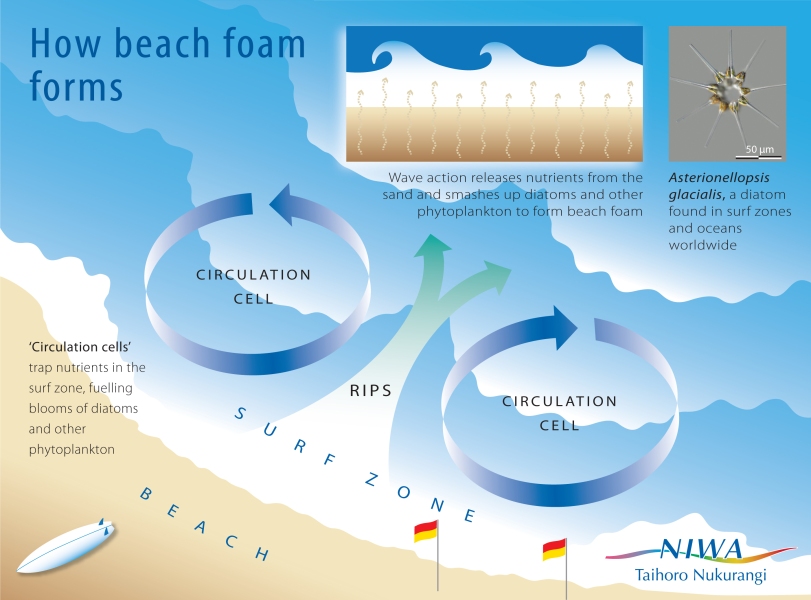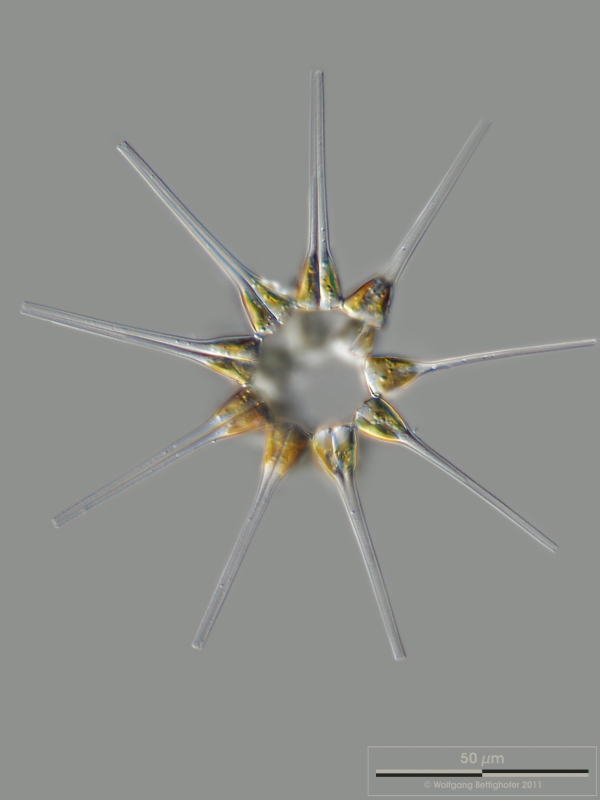Ever wondered what that brownish foam is that you sometimes see clinging to sandy beaches? It's easy to think the foam is a sign of pollution, but in fact it's a natural phenomenon associated with certain kinds of beaches, and the tiny organisms that live there.
"The foam is made up of the smashed up cells of phytoplankton – single-celled algae – and the nutrients they release when pounded by waves on surf beaches," says Janet Bradford-Grieve, a marine ecologist and plankton specialist at the National Institute of Water and Atmospheric Research (NIWA). "High energy surf beaches have their own special ecosystem dominated by diatoms, some of which live only in this environment."
Diatoms are a group of algae that form a big component of the phytoplankton. Because they have hard cell walls made of silica, they're usually the most obvious type of phytoplankton. Like all plants, they're capable of photosynthesis: converting carbon dioxide into nutrients, especially sugars, using the sun's energy. They're eaten by larger organisms, such as zooplankton (the animal component of the plankton), some small crustaceans, and bivalve shellfish such as pipi, toheroa, and tuatua. Because of their numbers, diatoms form an important part of marine food chains and can support large populations of shellfish on surf beaches.
"Diatoms can look brown or even like black oil," explains Dr Bradford-Grieve. "In certain conditions, the numbers of diatoms living in the surf zone will multiply over several days to create a 'bloom' which can then cause beach foam." Concentrations of diatoms can get very high during a bloom – up to tens of millions of diatoms per litre of water. "These blooms are fuelled by nutrients released in the form of waste products by single-celled organisms living in the sand – mostly bacteria and protozoa – and larger animals such as shellfish."
"The major driving force behind this whole process is wave action." Waves pump water through the sand, releasing nitrates and other nutrients. Waves also set up particular circulation patterns in the water that trap these nutrients in the surf zone.
This happens on exposed sandy beaches where there's a lot of wave energy and where the surf zone is sufficiently broad and shallow to set up circulation 'cells'. These are small circular currents either running along the beach with seaward-flowing rips between them (see diagram), or stacked vertically in the water column. Rather than being washed out to sea, the bulk of nutrients produced by the sand-dwellers are trapped close to shore in these cells, fuelling phytoplankton blooms.
Wave action not only smashes up the diatoms and other phytoplankton that make up the bloom, but also pulls in air bubbles to produce foam. This foam is typical of exposed sandy beaches in the Southern Hemisphere, although it's also seen in parts of North and South America. In New Zealand you'll find it mainly on west coast beaches, particularly in the winter months.
So rather than being inhospitable places to live, sandy beaches that are constantly pounded by waves are actually full of life. And beach foam is not a sign of pollution, but rather the outward sign of their enormous productivity.
Background
Dr Janet Bradford-Grieve has worked for more than 40 years as a marine ecologist and specialist in the taxonomy and evolution of marine copepods, tiny planktonic crustaceans. Now retired, she continues her research as an emeritus associate of NIWA.


